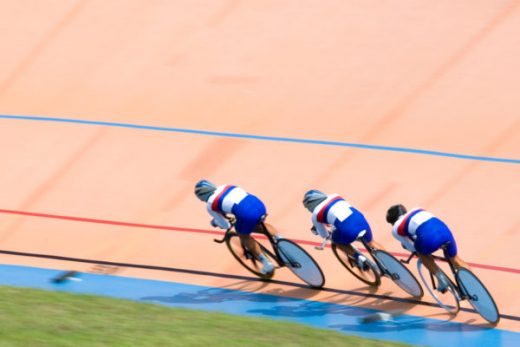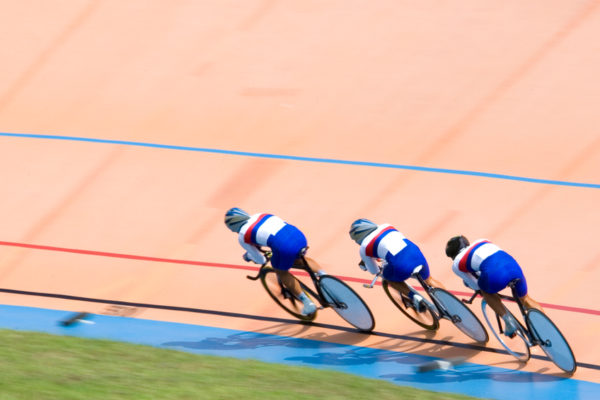USA Cycling drafts off IBM cloud in Rio gold hunt
USA Cycling drafts off IBM cloud in Rio gold hunt

In the ramp up to the Rio Olympics, USA Cycling Women’s Team Pursuit is boosting riders’ performance through connected devices and wearables that generate real-time insights via IBM’s Apache Spark cloud-based data analytics.
Performance insights gained from data analytics are increasingly used as a training tool in the hyper-competitive field of top-tier sport, especially in the team pursuit format where four cyclists follow each other closely around the track. The data insights can give an advantage that decides whether a cycling team wins a medal or comes home empty handed.
“In a sport where every 1/100th of a second counts, technology is empowering us to make training sessions and race simulations more impactful for the riders,” said Apex Coaching’s Neal Henderson who participated in the team’s selection of IBM’s data platform. “As a sport scientist and physiologist, I’ve seen the impact that real-time data about riders, track and performance can have on a training session.”
The cycling team is using a customized mix of IBM mobile technology, IBM’s artificial intelligence Watson, IBM Cloud and IBM Analytics solutions to help it mine rivers of information being produced by both the athletes and their bikes. Data is being fed by such connected devices as power meters on the bike, heartrate monitors and wearable BSX muscle oxygen sensors on the riders, and a data gateway via cell phones.
Real-time analysis has made a big difference
Henderson says the real-time data analysis via IBM’s Apache Spark technology has revolutionized the team’s training.
“We are able to provide actionable insights instantaneously when it used to take days or weeks,” he said. “For us, the biggest game changer is the ability to provide immediate objectively quantified feedback on power output, recovery rates and exchange performance.”
IBM began working with the cycling team in September last year, with implementation beginning this past February. USA Cycling Women’s Team Pursuit is among the world’s first athletics teams to fully integrate big data analytics into its training regimen.
“From a coaching perspective, we are already seeing the feedback loop tightening through the integration of data analytics solutions like this one,” he adds. “This enables us to strategize optimal rider exchanges in real time.”
To satisfy the team’s requirements, IBM’s Apache Spark needed to give trainers the computing power to quickly analyze each of the four riders’ linked power wattage, lap timing, muscle oxygenation and results of intensity analytics, all routed through an iPad dashboard.
“Prior to the IBM solution, we went through a very time-consuming, arduous process of collecting data from multiple sensors on both the bikes and the riders,” he said. “It could take days to provide feedback to our athletes after a training session.”
“By automating all the data capture, we are saving up to four hours per rider per day in analysis,” continues Henderson.
Initially the IBM solution aimed to streamline existing data sources for the team, but Henderson says as use of the technology evolves, he anticipates trainers will look at integrating metrics from other sources, such as environmental data and insights on recovery time.
Cycling wearables need to be effective but discreet
One of the key considerations was incorporating sensors and wearables into the team training program without throwing athletes off their game with cumbersome equipment.
“Our athletes are aware of the data capture, but the solution and sensors are designed to be non-invasive,” Henderson said. “The solution is designed to be agile and easy to use and requires minimal optimizations to ensure clean data capture.”
He adds that team technologists are also integrating wearable technology into the solution so that riders can receive insight on matches burned or W-prime while riding through SOLOS display glasses.
According to Henderson, the team response to the IBM solution from both athletes and coaching staff has been very positive so far. Particularly useful is the ability to harness data to improve the impact of each training session, whether athletes are training individually or as a team.
“From a team perspective, sharing of data between our riders allows us to hold each other accountable,” says Henderson. “We know the power each team member can and should be delivering to keep the team at a given speed based on aerodynamic drag and ambient conditions such as weather.”
“Through these analytics, we can better understand team performance and identify ways to make minimal improvements that are game changers in sports like Team Pursuit Cycling.”
The post USA Cycling drafts off IBM cloud in Rio gold hunt appeared first on ReadWrite.
(23)



